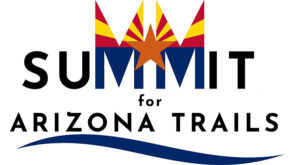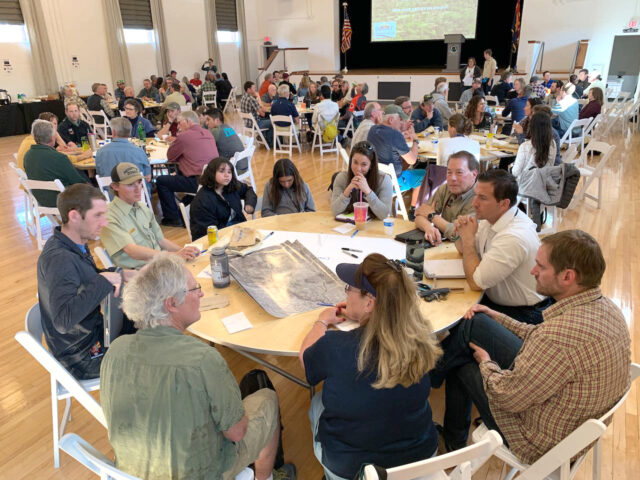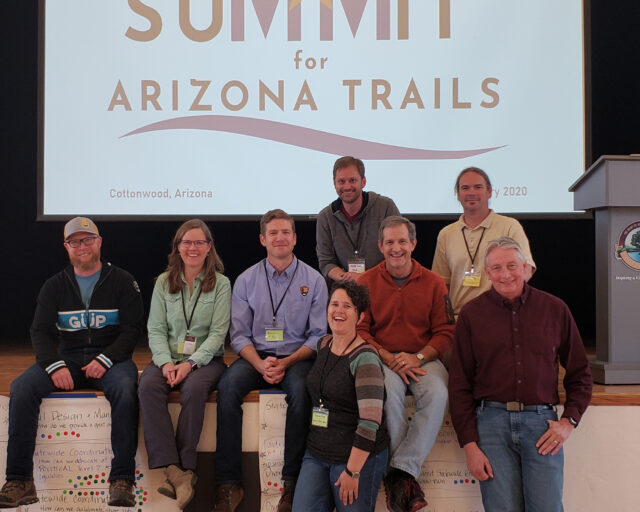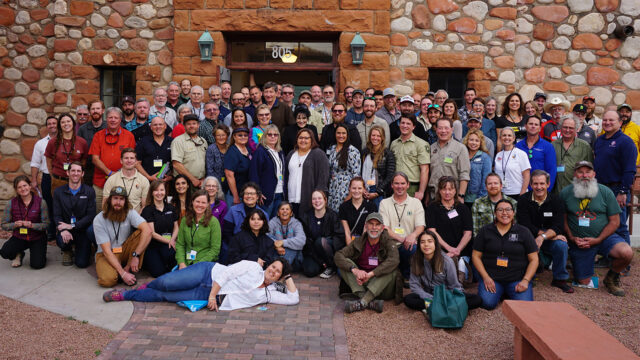Summit for Arizona Trails
Statewide trails network discusses shared challenges and opportunities
by Wendy Lotzke, Coordinator and Volunteer Program Manager, Summit/Network for Arizona Trails and Arizona Trail Association
 In February 2020, a small volunteer committee of trail managers, builders, and enthusiasts convened the inaugural Summit for Arizona Trails at the historic Community Club House in Cottonwood, AZ. People from more than two dozen organizations, 10 local governments, several small locally-owned businesses and five State or Federal agencies participated. This was the first such gathering in Arizona in 12 years and the first to include both motorized and nonmotorized trail recreation interests. For those who participated, and those who have been drawn into the resulting Network for Arizona Trails work, the Summit was just a first step in a long game strategy to elevate trail-related recreation in the State.
In February 2020, a small volunteer committee of trail managers, builders, and enthusiasts convened the inaugural Summit for Arizona Trails at the historic Community Club House in Cottonwood, AZ. People from more than two dozen organizations, 10 local governments, several small locally-owned businesses and five State or Federal agencies participated. This was the first such gathering in Arizona in 12 years and the first to include both motorized and nonmotorized trail recreation interests. For those who participated, and those who have been drawn into the resulting Network for Arizona Trails work, the Summit was just a first step in a long game strategy to elevate trail-related recreation in the State.
The Arizona Trail Association (ATA) provided leadership in the development and execution of the Summit, in large part because we identified a need for more effective advocacy for trails Statewide. The recent surge in the popularity of the Arizona National Scenic Trail (AZT) has put the ATA in a unique position within Arizona’s outdoor recreation community. The national attention the trail garners means economic opportunities for Gateway Communities and business partners, and that opportunity translates to a unique cachet for the ATA with elected officials, land managers, and local nonprofits.
While many of the challenges of protecting, maintaining, and sustaining a resource such as the AZT are unique to long-distance trails, so many other times we found camaraderie with other trail advocates in our struggles to have the value of these trail resources truly reflected in the decisions made at local, State, and Federal levels. Activating this diverse community toward advocacy and mutual support could help find movement on long term critical issues such as recreational use of State trust lands, complications faced with National Environmental Policy Act clearances, the State grant funding process, and volunteer recruitment and management across jurisdictions.

Over 100 advocates, planners, users, and managers from across Arizona came together to network and discuss shared challenges and opportunities during the Summit for Arizona Trails in February 2020. Photo Credit: Summit for Arizona Trails
With support from the National Park Service’s Rivers, Trails, and Conservation Assistance (RTCA) program, we collected a volunteer team of organizers who were chosen as much by their willingness to participate as their ability to think strategically. We were intentional in our efforts to keep the core group diverse, with representatives from motorized as well as nonmotorized recreation groups, nonprofits, private businesses, conservation corps, local governments, the U.S. Forest Service, and National Park Service. Because we were trying to represent as many different communities across the State as possible, the group only met virtually until the actual date of the Summit. We recruited sponsorship from trail-related businesses and participating agencies, and worked hard to keep participant costs to a minimum to engage as broad a group as possible. We were even able to offer scholarships to students and young professionals to foster the next generation of trail stewards.
The Summit itself was structured to be a work session rather than a conference or training. Discussion topics were identified in advance through a participant survey and one-on-one conversations with recreation leaders. Participants were able to share their challenges and victories in multiple topics and begin brainstorming ways to bring about positive change.

Committee. Photo Credit: Summit for Arizona Trails
After a successful Summit, the ad-hoc and volunteer Steering Committee began to look at creating a more formal structure to support work on the initiatives generated at the meeting. However, when the global pandemic hit, priorities shifted multiple times in the course of just a few weeks as organizations found their operations scrambled and public need for outdoor spaces and safe recreation outlets exploded. The beginnings of a network, however, turned out to be a boon. Steering Committee leaders used the contacts from the Summit to begin a trails COVID response forum. Zoom meetings provided space for people working on trails to share updates on management strategies, compare notes on the changing use patterns, and begin to work together to create and share messaging. While many who attended the initial meetings were also at the Summit, the nature of this work expanded the Network even further, bringing in more community managers and nonprofits trying to respond in a constructive way to the crisis. As we enter the next stages of the pandemic and eventual recovery, the group will continue to share resources and keep the trails community connected.

Group. Photo Credit: Summit for Arizona Trails
The new name for the effort—the Network for Arizona Trails—is continuing efforts to establish a collaborative decision-making structure. With the ATA providing the backbone, we have been working on grant funding for education and community development, as well as continuing to solicit support from the business community. The ATA has been diligent to be sure that providing leadership does not become sole ownership. We know that the real power of an effort like the Network comes from the passion and commitment of its participants, and that it can only be made stronger as it draws energy from a diverse coalition of interests.
Learn more about the network: